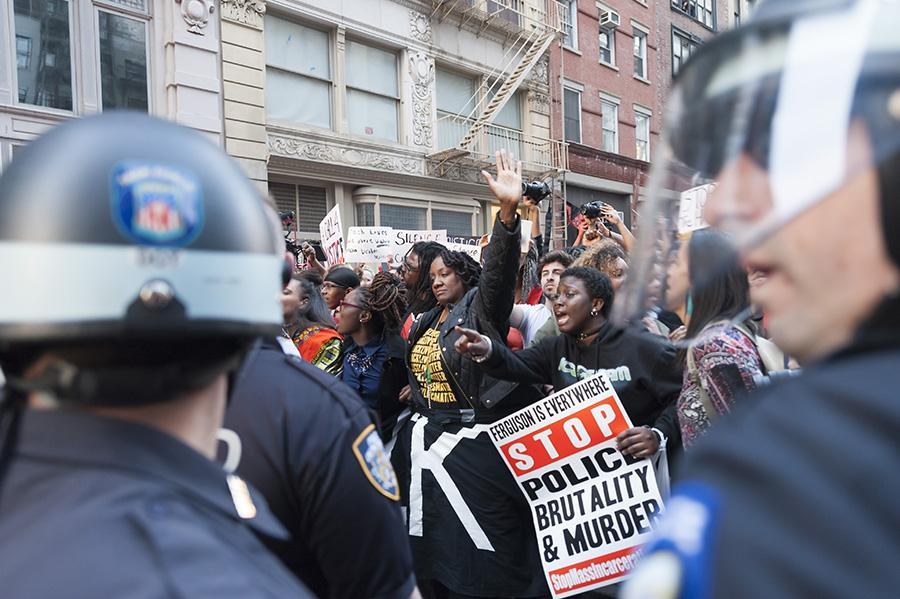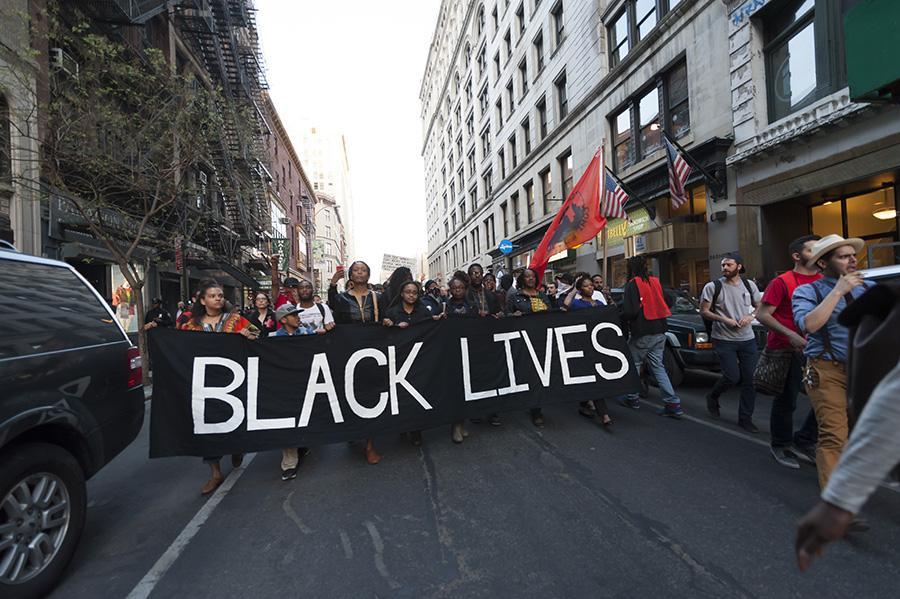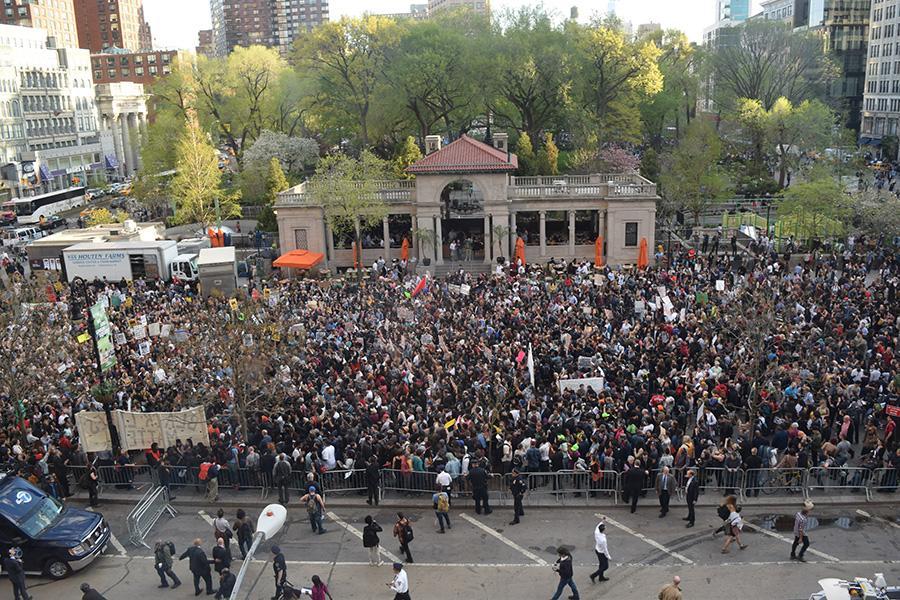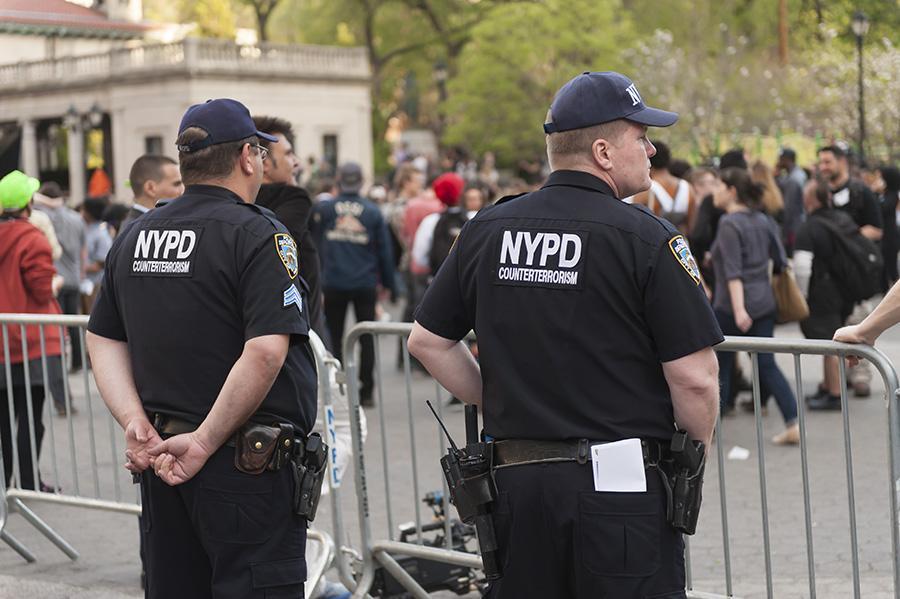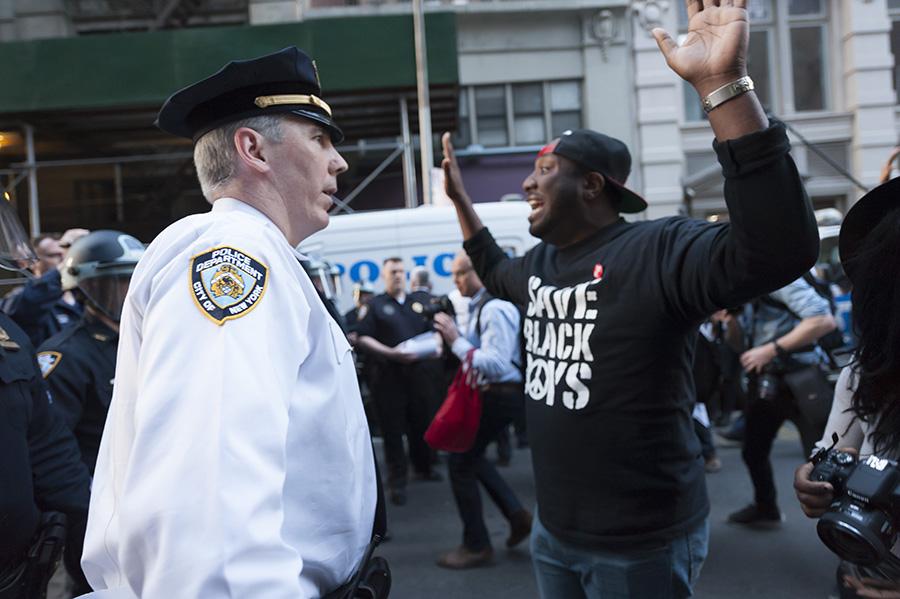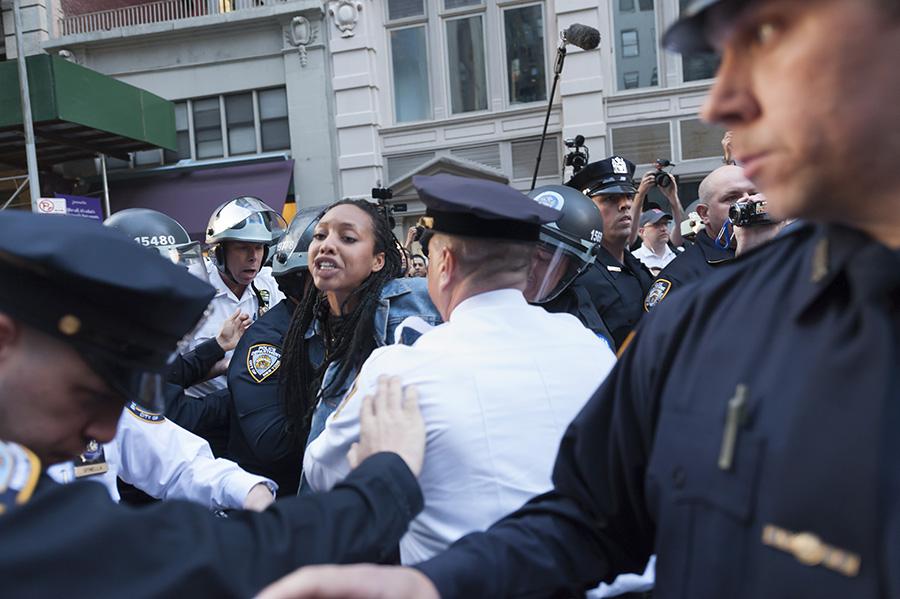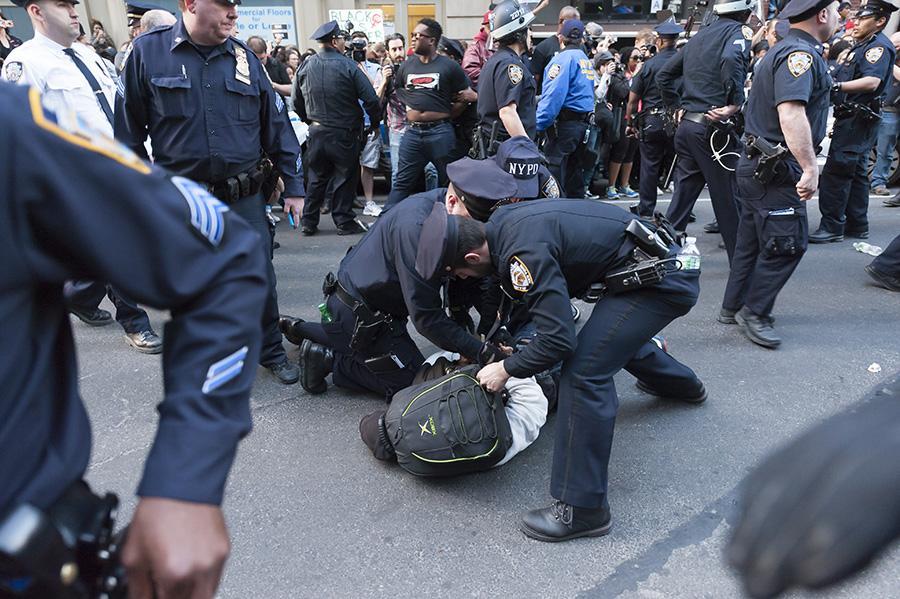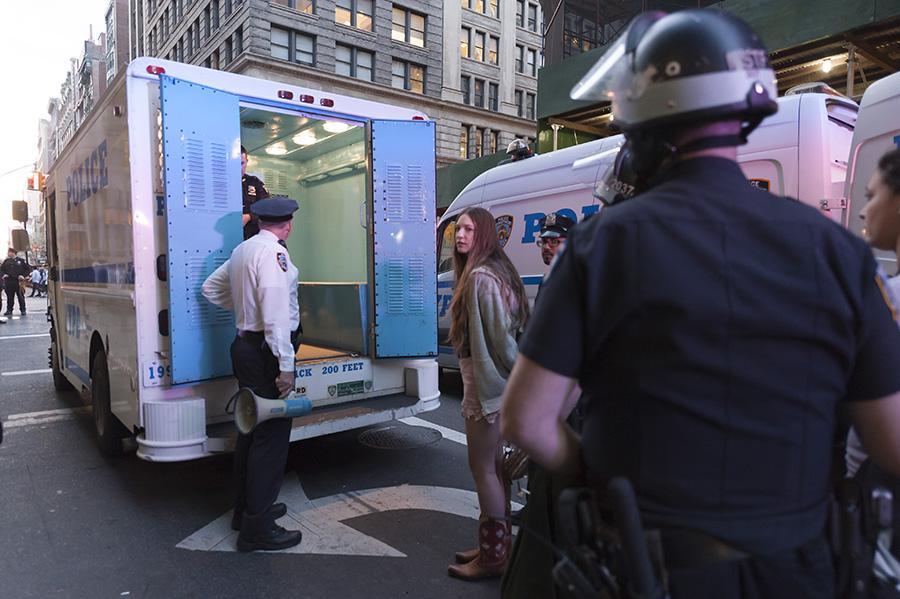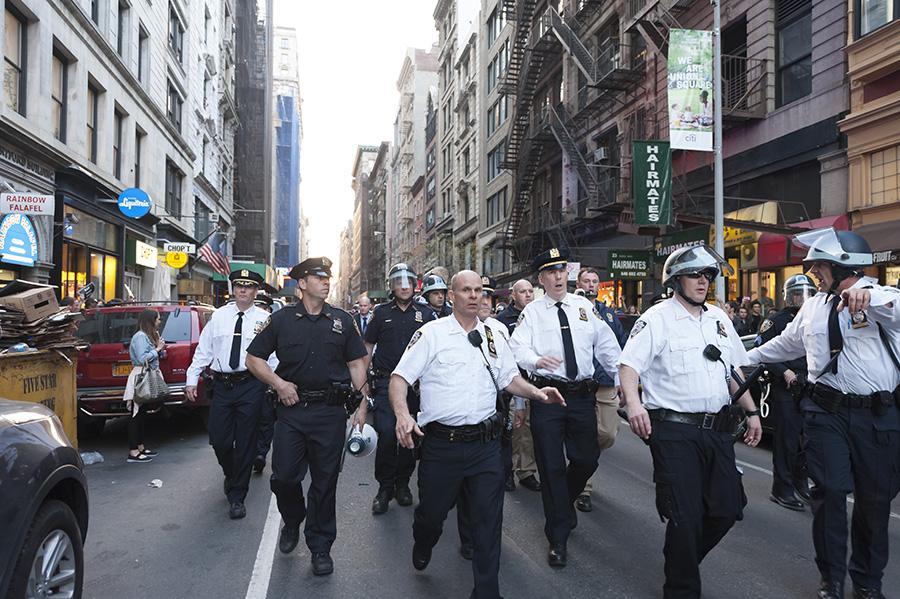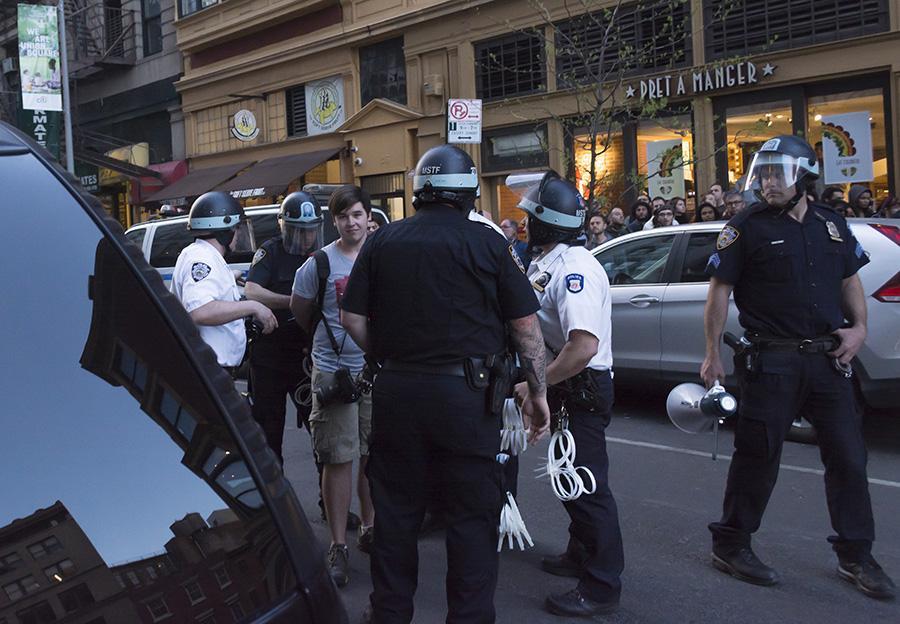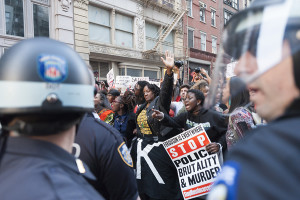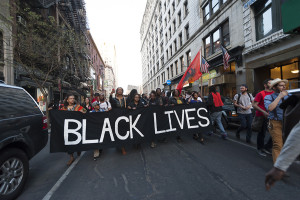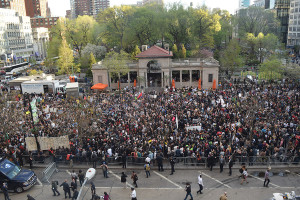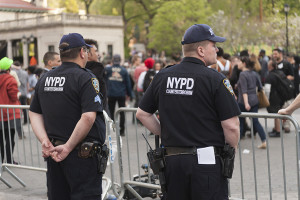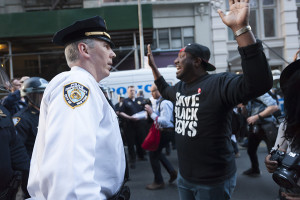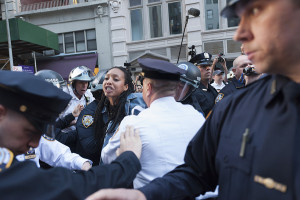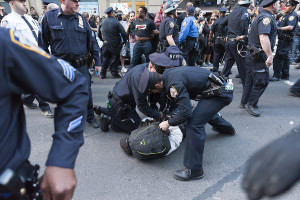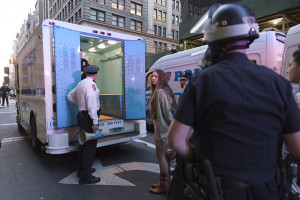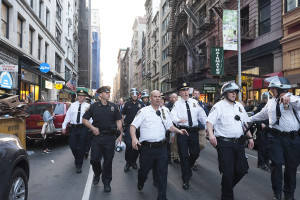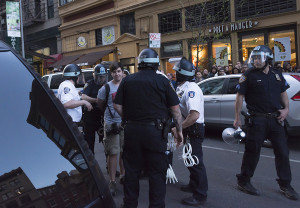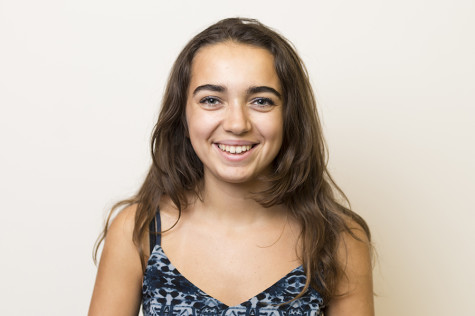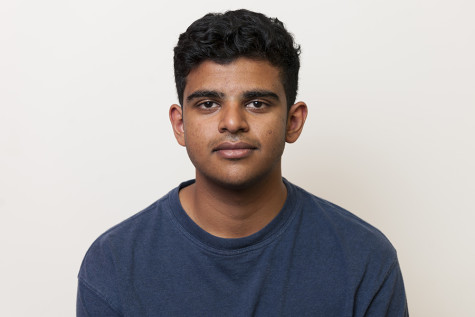New York City joins in Freddie Gray protests
April 30, 2015
—
Demonstrators took the streets of New York City Wednesday evening in solidarity with the people of Baltimore, who have been protesting police brutality following the death of Freddie Gray on April 21.
Gray, a 25-year-old black male, was taken into custody on a weapons charge. Gray incurred spinal injuries while being held by the police and was subsequently sent to the hospital, where he died a week later.
The death of Gray is the most recent case of police violence in a year of protests and riots surrounding the deaths of unarmed people at the hands of the police. As the protesters gathered on the north side of Union Square at 6 p.m., organizers handed out fliers and posters with the names of 44 people of color who have been killed by the police between 1994 and 2014.
Mike Wallace, a graduate student who attended the protests, said he is frustrated with the lack of action following police brutality.
“I’m here to show support for the minority communities who don’t have a voice of their own because they’re so repeatedly targeted and abused,” Wallace said.
Around 7:30 p.m., those who had gathered in Union Square started marching, ultimately making their way to Times Square. As of press time, protesters had reached as far as the Holland Tunnel and the West Side Highway.
Popular hashtags social media users have used to tweet about the protests include #NYC2Baltimore, #BaltimoreUprising, #BlackLivesMatter, #FreddieGray and #BaltimoreRiots.
The New York City Police Department warned protesters not to walk on the streets, threatening charges of disorderly conduct. More than 100 protesters were arrested, including Tisch junior Sam Bearzi, WSN photo editor, who was arrested for being in the streets and obstructing traffic. NYPD put those arrested into police vans.
“Please be advised that pedestrians are not permitted to walk in the street or roadway,” the NYPD blared over loudspeakers. “If you unlawfully obstruct pedestrian traffic or walk in the street or roadway you may be placed under arrest and charged with disorderly conduct, a violation of New York state penal law.”
Brandon Mendez, a high school student who was at the protest, said he witnessed a man being arrested for without clear cause.
“NYPD are very abusive and I’ve seen it, especially tonight,” Mendez said. “I’ve seen a reporter do nothing and he gets tackled by seven cops.”
A large number of NYU students were part of the protest, including a group from NYU Divest and the Incarceration to Education Coalition.
LS freshman Fahad Iqbal said he was not afraid of being arrested, as all protesters were standing in unity.
“No one’s going to hurt me out here,” Iqbal said. “We’re a family out here. We’re working together.”
CAS sophomore Angie Hernandez said she attended the protest because New York City has been one of the cities where citizens have experienced police attacks.
“It is time that New York City people rise up and give a broad statement against what the NYPD has been doing in our communities, in our schools; the harassment, the intimidation that we see all the time,” Hernandez said.
CAS sophomore Nick D’Angelo said police brutality cases across the country have been out of control.
“I think the police has definitely overstretched and overstepped what it’s supposed to be doing and I think there’s a massive system of mass incarceration that needs to be dismantled by activism,” D’Angelo said.
Following Gray’s death, there were several days of peaceful protests until his funeral on Monday evening, after which local demonstrations turned violent. Many cars were set on fire, windows shattered and stores looted, leading Maryland Gov. Larry Hogan to activate the National Guard and set the city of Baltimore in a state of emergency. Curfew was also established for all residents.
Protests have also sparked in Boston, Minneapolis and other cities across the country.
D’Angelo said most of the people in Baltimore were protesting in a peaceful manner, even though violent actions attracted the public’s interest. In any case, D’Angelo said he supported the movement.
“I think most of the protesters were nonviolent,” D’Angelo said. “Either way I have full solidarity.”
Additional reporting by Alex Bazeley and Alanna Bayarin.
A version of this article appeared in the Thursday, April 30 print edition. Email Marita Vlachou at [email protected].























































































































































